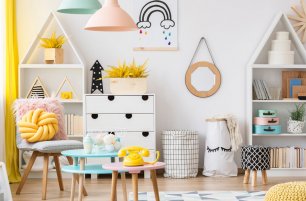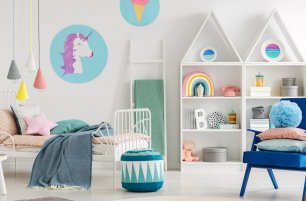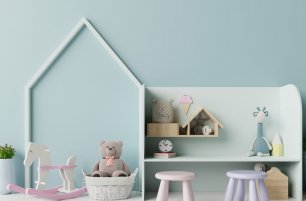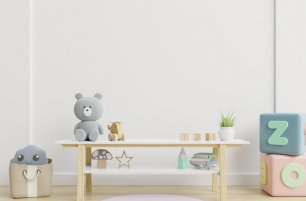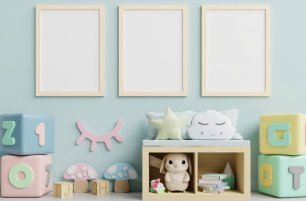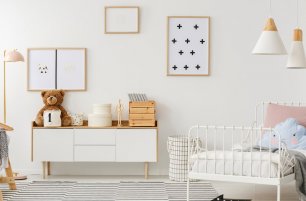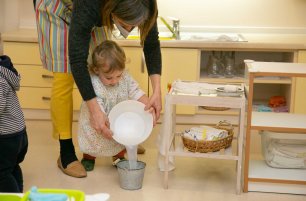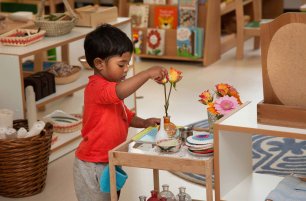Creating a Montessori Home
Discover simple, easy ways to make your child's space comfortable, beautiful and educational, according to time-tested Montessori guidelines and principles.
From birth through toddlerhood, preschool and Elementary years, the home is the foundational environment where your child plays, learns and grows. This is where they make countless discoveries, bond with the most important people in their life (you!) and form their understanding of the world.
In Montessori education, we speak of the „prepared environment“ of the classroom being the key to the child’s development. The same thing applies to your child’s home! We know that children grow and learn better in places that feel safe, comfortable and stimulating, all at the same time – but how to accomplish that? Below are a few tips.

Consider your child’s point of view
Here is some surprising information: children are smaller than adults. That means that they see a different perspective of every space. Get down on your child’s level – literally, sit or crouch down in their room – and consider, can they see and access their toys? Are the pictures and decorations actually in their sightline? Are the tables and chairs a comfortable height? Does the space fit their body, allowing for cozy nooks to snuggle down in?
Less is more
When you see our classrooms, you might notice there are no boxes and chests for materials (or toys), no piles and bins. Everything is easy to see, orient yourself in, and choose from. It is far better to have a handful of toys out and the rest locked away in a closet, and switch out the „seasonal offer“ regularly, than to overwhelm your child with choices. Rule of thumb: if your child hasn’t touched a particular toy in a week, it’s safe to put it away for a time; it will be that much more fresh and exciting when it appears again in the future.
Go natural
There is such an overwhelming quantity of plastic offered up to young children in our society. It’s understandable – plastic is cheap, easy to clean, and bounces when dropped – but by focusing on this one material, we are making children miss out on the many tactile pleasures of wood, porcelain, metal, glass, textiles and more. Whenever possible, offer your child real, natural materials that give them a wealth of sensory experiences as well as a real perception of beauty and a connection with nature.
Allow for both contrast and peace
It is a somewhat common and very unfortunate misconception that children need an endless barrage of bright colours and loud sounds to capture their attention. Of course, all people (not just the small ones) are drawn to bright and colourful things – but by bombarding our children with constant sensory overload they become more numb than stimulated. Provide a neutral, peaceful background – soft colours, light, naturally coloured furniture and fabrics – that will allow your child’s eyes and mind to rest; it will make their toys and activities stand out that much more.
Want to learn more? Read our next article:
